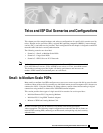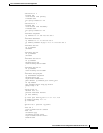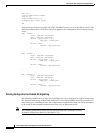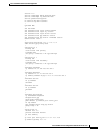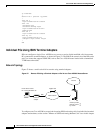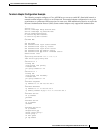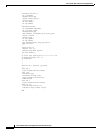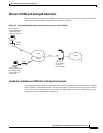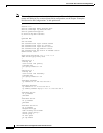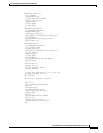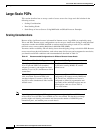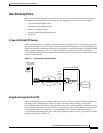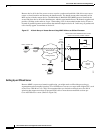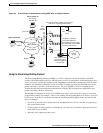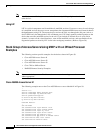
DNC-305
Cisco IOS Dial Services Configuration Guide: Network Services
Telco and ISP Dial Scenarios and Configurations
This chapter provides sample hardware and software configurations for specific dial scenarios used by
telcos, Internet service providers (ISPs), regional Bell operating companies (RBOCs), inter-exchange
carriers (IXCs), and other service providers. Each configuration in this chapter is designed to enable IP
network traffic with basic security authentication.
The following scenarios are described:
• Scenario 1—Small- to Medium-Scale POPs
• Scenario 2—Large-Scale POPs
• Scenario 3—PPP Calls over X.25 Networks
Note In all of these example scenarios, you can replace the Cisco AS5200 access server with a
Cisco AS5300 access servers, Cisco AS5800 access servers, or Cisco AccessPath routers.
This hardware exchange provides higher call density performance and increases the
number of PRI interfaces and modem ports on each chassis.
Small- to Medium-Scale POPs
Many small-to-medium-sized ISPs configure one or two access servers to provide dial-in access for their
customers. Many of these dial-in customers use individual remote personal computers (PCs) that are not
connected to LANs. Using the Windows 95 dialup software, remote clients initiate analog or digital
connections using modems or home office ISDN BRI terminal adapters.
This section provides three types of single user dial-in scenarios for service providers:
• Individual Remote PCs Using Analog Modems
• Individual PCs Using ISDN Terminal Adapters
• Mixture of ISDN and Analog Modem Calls
Note Be sure to include your own IP addresses, host names, and security passwords
where appropriate. The following sample configurations assume that the dial-in clients are
individual PCs running PPP, connecting to an IP network, and requiring only basic security
authentication.



